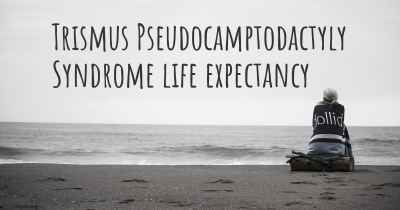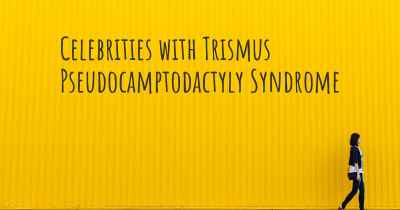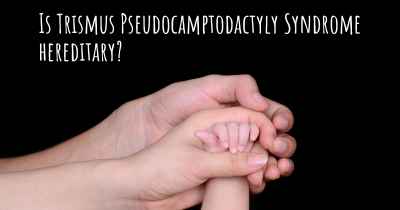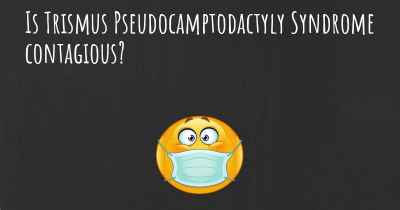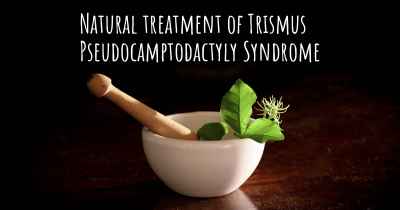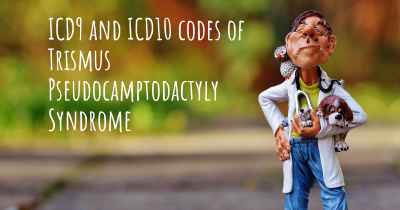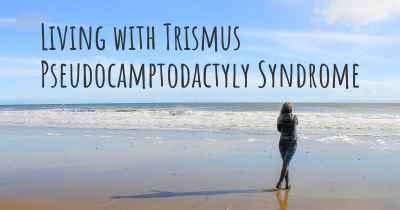What are the best treatments for Trismus Pseudocamptodactyly Syndrome?
See the best treatments for Trismus Pseudocamptodactyly Syndrome here
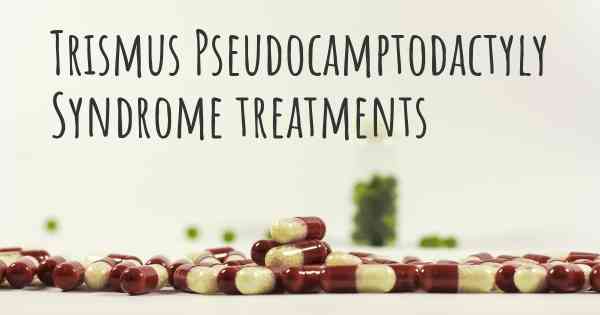
Trismus Pseudocamptodactyly Syndrome (TPS) is a rare genetic disorder characterized by the combination of limited mouth opening (trismus) and fixed flexion deformity of the fingers (pseudocamptodactyly). This condition can significantly impact an individual's ability to eat, speak, and perform daily activities. While there is no cure for TPS, several treatment options can help manage the symptoms and improve quality of life.
Physical therapy and stretching exercises: A key component of managing TPS is regular physical therapy. Physical therapists can design a customized exercise program to stretch and strengthen the muscles and joints affected by trismus and pseudocamptodactyly. These exercises aim to improve range of motion, reduce stiffness, and enhance functional abilities.
Oral devices and splints: Dentists or oral surgeons may recommend the use of oral devices or splints to help alleviate trismus symptoms. These devices are designed to gradually stretch the jaw muscles and increase mouth opening. They can be custom-made to fit the individual's mouth and may need to be worn for extended periods to achieve optimal results.
Medications: In some cases, medications may be prescribed to manage pain, reduce inflammation, and relax the muscles. Nonsteroidal anti-inflammatory drugs (NSAIDs) or muscle relaxants may be used to alleviate discomfort and improve jaw mobility. However, it is important to note that medication alone is not sufficient and should be combined with other treatment modalities.
Surgical interventions: In severe cases of TPS where conservative measures are ineffective, surgical interventions may be considered. Surgical options can include procedures such as release of contractures, joint mobilization, or tendon transfers. These surgeries aim to improve joint function, increase range of motion, and correct deformities. However, the decision to undergo surgery should be carefully evaluated and discussed with a team of specialists.
Speech therapy: Individuals with TPS may experience difficulties with speech due to limited mouth opening. Speech therapy can help improve articulation, swallowing, and overall communication skills. Speech therapists can provide exercises and techniques to enhance oral motor function and maximize speech abilities.
Psychological support: Living with a rare genetic disorder like TPS can be challenging both physically and emotionally. It is important for individuals and their families to seek psychological support and counseling to cope with the impact of the condition. Support groups and counseling services can provide a safe space to share experiences, gain knowledge, and receive emotional support.
While there is no definitive cure for Trismus Pseudocamptodactyly Syndrome, a multidisciplinary approach involving physical therapy, oral devices, medications, surgical interventions, speech therapy, and psychological support can significantly improve the quality of life for individuals with TPS. It is essential to consult with a team of healthcare professionals experienced in managing rare genetic disorders to develop an individualized treatment plan.
